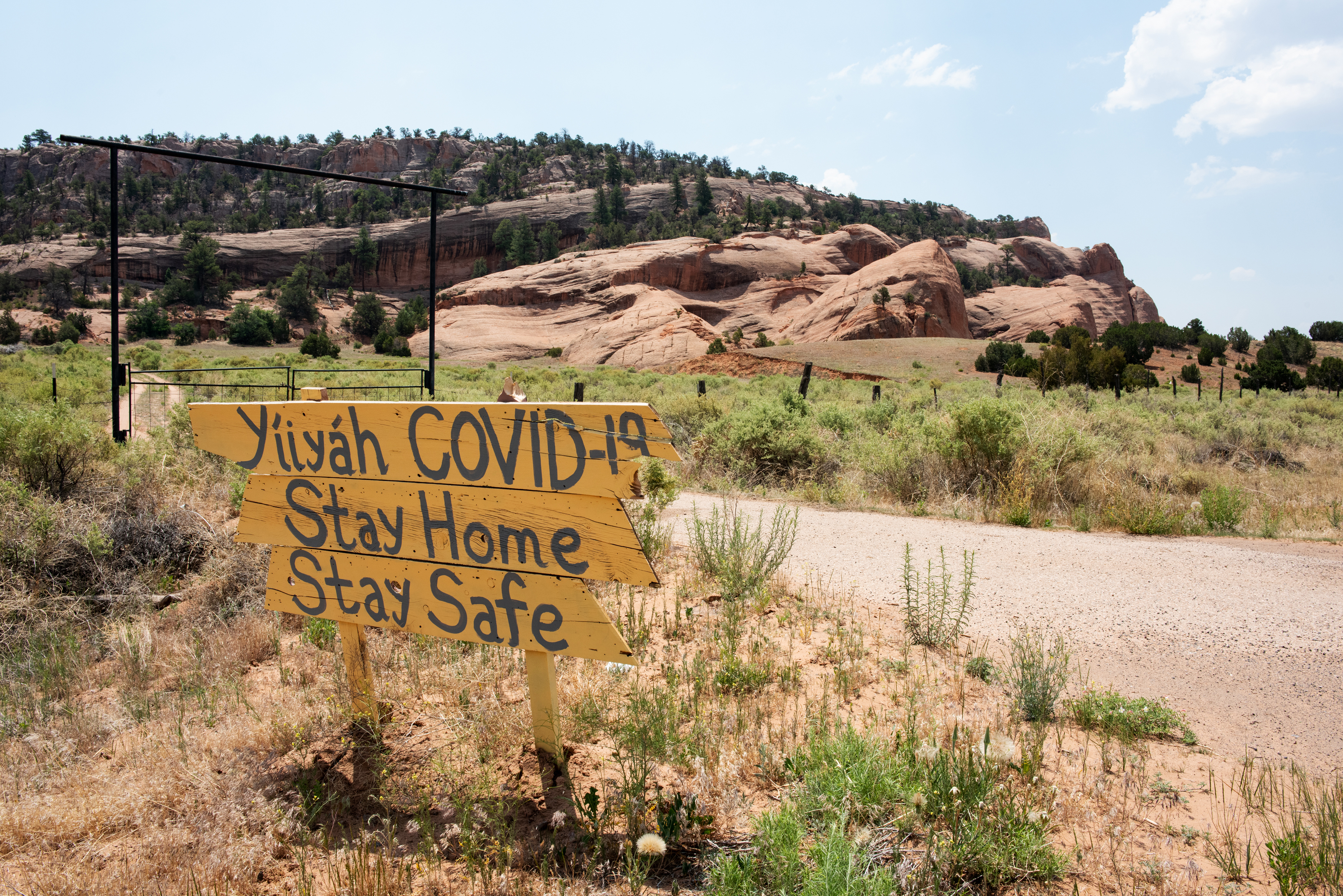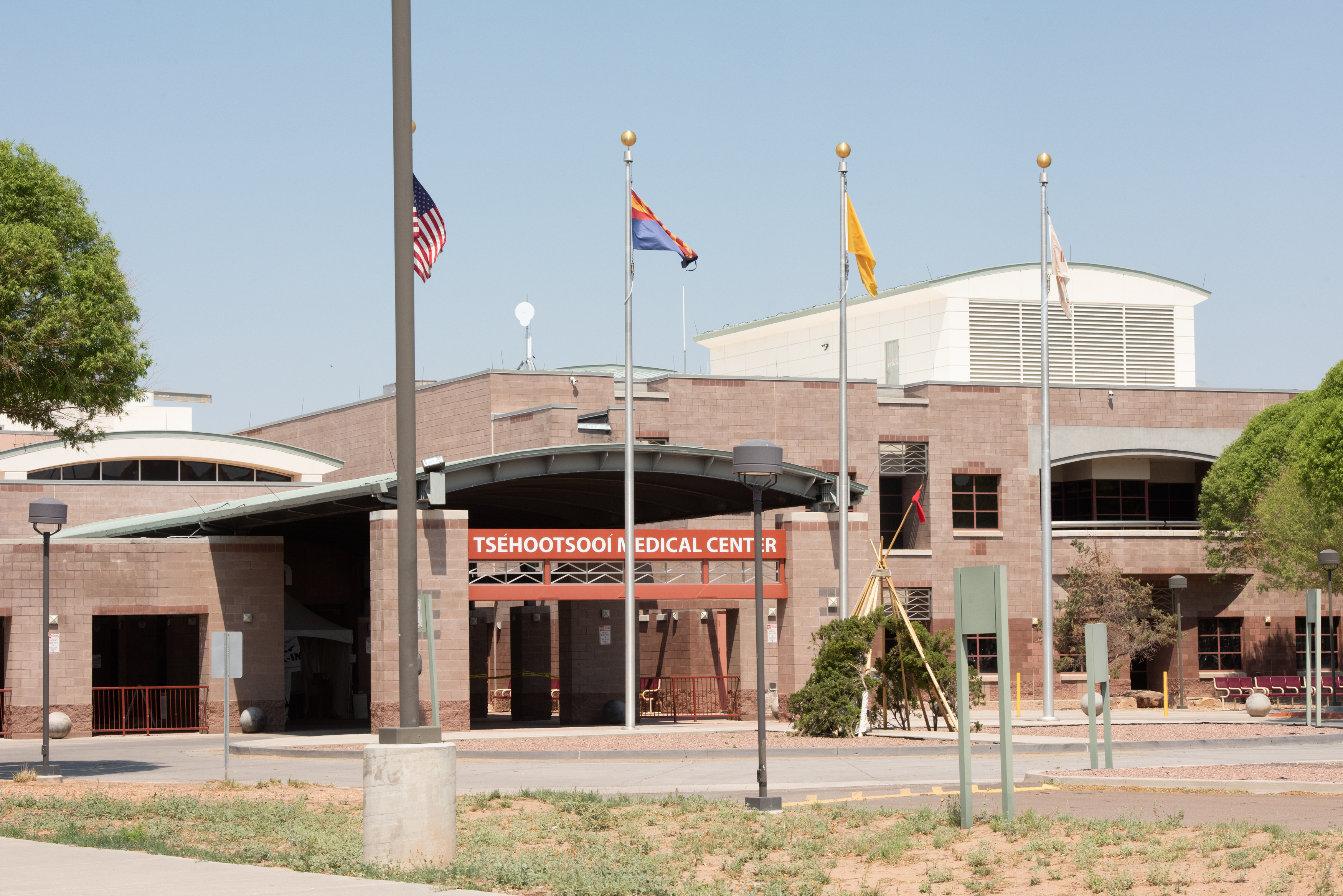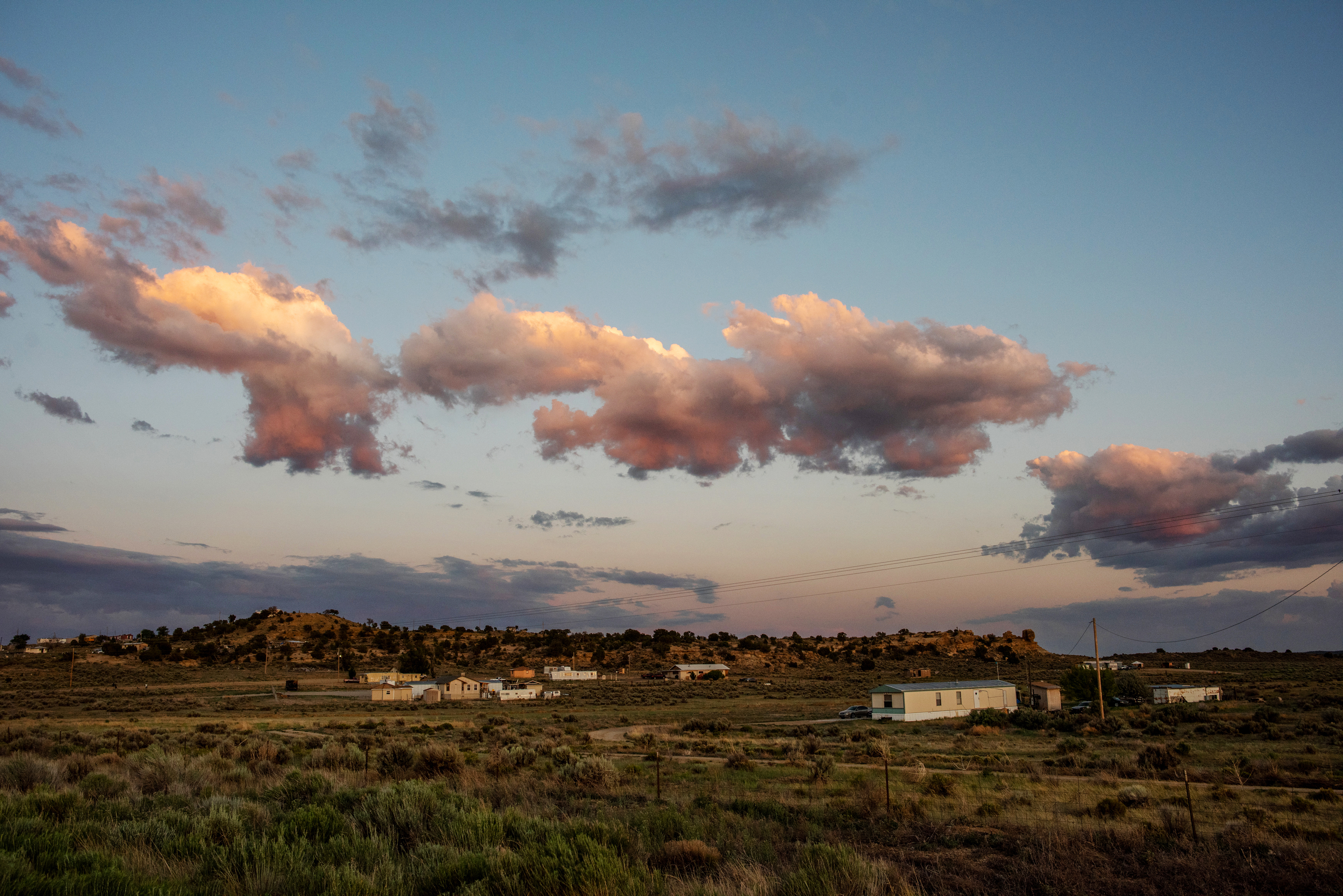Department Members Provide Much-Needed Relief In Navajo Nation, NYC
In the early days of the coronavirus pandemic, when San Francisco appeared to have averted its health system being overwhelmed, people at UCSF formulated plans to help their colleagues in two COVID-19 hotspots: the Navajo Nation and New York City.
With critical care clinicians in particular demand, Chair Michael Gropper, MD, PhD, put out a call for volunteers. Faculty members from the UCSF Department of Anesthesia and Perioperative Care responded.
New York
 On April 11, 2020, four anesthesiologists joined what would eventually be 24 UCSF clinicians to help exhausted healthcare workers at New York Presbyterian hospitals in Manhattan and Queens.
On April 11, 2020, four anesthesiologists joined what would eventually be 24 UCSF clinicians to help exhausted healthcare workers at New York Presbyterian hospitals in Manhattan and Queens.
Melvin La, MD, went to New York-Presbyterian/Weill Cornell Medical Center on Manhattan’s Upper East Side, where he had done his residency and worked until he joined UCSF early last year. “I had a lot of friends there – former co-residents, and mentors…I couldn’t help but volunteer,” he says.
Jeanie Bhuller, MD, Lundy Campbell, MD, and Wei Zhou, MD, went to New York-Presbyterian Queens. All felt it was their responsibility to answer the call.
“My work in global health has helped me think more broadly than my immediate surroundings,” says Campbell. “Watching what was going on in New York City made me want to go …but I wouldn't have been able to except that my family was on board and my colleagues stepped forward to cover my shifts.”
Bhuller, who also got the blessing of her family, says, “I was losing a fair amount of sleep when I thought about what was happening there.”
A Health System Overrun
All four anesthesiologists say that despite all they knew before arriving, they could not have fully anticipated what greeted them.
“I know what New York is supposed to look like and going through the Holland Tunnel, Times Square, it was eerie,” says La. “And when I walked into hospital where I trained, it was totally unrecognizable. All of the ORs had been converted into ICUs. They’d run out of ventilators, and were using anesthesia machines to ventilate patients…. I was taking care of 15 patients at a time and as a non-ICU trained physician, I got a crash course in critical care.”
At Queens, says Zhou, “I stepped into a cath lab that had been converted into an ICU and it was like a war zone – the amount of patients, people in full HazMat, goggles, face shield and gloves…an entire system stretched thin.”
“It was eye-opening to see it on the ground,” says Campbell. “There were all these patients intubated and on mechanical ventilators, on regular hospital floors - not monitored, with no one to see them. We spent our days managing dying patients and intubating others who were falling off. It was a twelve-hour blur.”
Though things improved somewhat over the course of the month they were there, there were ongoing scrambles to get the right equipment to patients who were not only on ventilators, but also on renal failure therapy or struggling with other organ failure. Titrating ventilation was an ongoing challenge.
“And there was the clinically strange phenomena of the blood clots,” says Bhuller. She describes a 34-year-old patient who within a few hours had to be intubated and placed in a drug-induced coma. When the clinical team woke him and extubated him, he had a stroke. “He survived, but his life will never be the same.”
Moreover, while there was an intense focus on getting ventilators to New York, the hospitals also needed more physicians, nurses, respiratory therapists, people to run the ventilators and more.
“There were some great clinicians there…lots of amazing people doing their best with what little they had,” says Bhuller. “When we arrived there were 160 patients intubated; on a busy day in normal times you might have 20. ICU nurses sometimes were managing 10 patients by themselves. You wouldn’t do that with [much less critical patients] on a floor, so we were all doing everything – hanging fluids, just grabbing the bag and spiking it. It was a team approach…. And we were doing all the things the literature said, but if you had one in 50 come off the ventilator successfully, that was the win of the month,”
“If you work in the ICU, you deal with death every day, but not on this magnitude,” says Campbell. “Every day, at least one person died, possibly many. There’s this balance in medicine between keeping some emotional distance to be effective, but also being human. It was a challenge for all of us.”
The UCSF volunteers had to confront that challenge without being able to return to their homes and families each night. Instead, they returned to hotel rooms, hungry and exhausted and sad. “I went into survival mode, taking it one day at a time,” says Bhuller. But she also took comfort in the strength and graciousness of her New York colleagues. “They are incredible people and they were incredibly welcoming. Thankfully, we at least gave them the rest they needed.”
The city itself provided another source of support. “Restaurants sent food. Families donated meals,” says La. “At 7 every night, people would come out and cheer on the streets…. It was inspiring to see the whole city come together.”
In addition, all four were grateful for the support of their department colleagues, who did everything from covering shifts to sending care packages. “I can’t stress enough how much that support made the month more tolerable,” says Campbell.
Returning Home
Understandably, the experience left a mark. “I feel a little bit of survivor's guilt, leaving behind all these amazing colleagues,” says La. “But I was also proud that we were able to demonstrate just how versatile [anesthesiologists] are, how we can rise to the challenge and use our skill set to help critically ill patients.”
Zhou adds, “We learned a lot about how to organize the team so you [properly] allocate all the resources available. People from all over the country worked very hard to improve a devastating situation, and it was encouraging to see the community.”
“It’s also important to realize that any healthcare system can be overrun,” says Campbell, who says he’d only experienced conditions like New York during the COVID surge in developing countries. “It’s a world of medicine we’re not used to.”
That recognition, as well as witnessing firsthand the devastation the disease can impose, makes it hard for him to see people ignore guidelines about wearing masks and social distancing or commenting that it’s not as bad as the public health experts say it is. “It is bad,” he says. “And protection works – none of us who went tested positive. I know we’re all sick of socially isolating, but it’s the only way we’re going to get through this.”
Navajo Nation
 The department’s Sam Percy, MD, and his wife, Carlie Field, MD, an Ob-Gyn, had already been practicing at the Chinle Comprehensive Health Care Facility in Arizona when the pandemic hit.
The department’s Sam Percy, MD, and his wife, Carlie Field, MD, an Ob-Gyn, had already been practicing at the Chinle Comprehensive Health Care Facility in Arizona when the pandemic hit.
Percy was there as the first anesthesia provider to be a UCSF HEAL (Health, Equity, Action, Leadership) Global Health Fellow. He links his interest in HEAL – which according to its website aims to train, transform, and build a community of front-line health workers committed to serving the resource-denied – with having grown up in and around the Navajo Nation, where his father was a physician. “I came to Chinle to be near family and provide care to the people here,” he says. “Then COVID hit and it forced me to apply my skills to the fullest extent possible.”
A Health Service That Knows How to Respond in a Crisis
Health crises often hit the Navajo Nation disproportionately, due to large numbers of people experiencing underlying conditions and because of environmental factors like limited access to water and electricity. When the first case hit in March, the leadership team at Chinle had seen it coming.
 Under normal circumstances, intubated patients at Chinle are flown to to surrounding tertiary care centers in Arizona and New Mexico, but when the numbers complicated this protocol, Chinle quickly converted most of its 60 beds to a COVID unit, turning to negative pressure rooms to minimize exposure and protect hospital workers.
Under normal circumstances, intubated patients at Chinle are flown to to surrounding tertiary care centers in Arizona and New Mexico, but when the numbers complicated this protocol, Chinle quickly converted most of its 60 beds to a COVID unit, turning to negative pressure rooms to minimize exposure and protect hospital workers.
Percy and his two anesthesia colleagues – another anesthesiologist and a certified registered nurse anesthetist were in high demand. “We only had six ventilators prior to COVID and the only nurse who felt comfortable on the ventilators worked the day shift,” says Percy. In theory, a converted Respiratory Care Unit had a capacity of 20 patients, but early on they only had enough staff for four patients, until a Disaster Medical Assistance Team and UCSF supplied the nursing staff to fully operationalize the unit. “It’s been amazing to see a place that doesn't normally provide critical care, caring for conditions like hypoxemic respiratory failure,” says Percy.
In addition, when intubated patients fly to outside hospitals, the flight is paid for, but if they are extubated, they have to pay their own way back. That and a common desire to be cared for in their own community is why, says Percy, “One of our goals early on was to stave off intubation as much as possible.” Based on early thinking out of China, using a high-flow nasal cannula averted intubation for about a third of patients.
Despite the challenges, Percy emphasizes that the crisis has demonstrated the considerable strengths of the Indian Health Service (IHS) to maximize quality of care with constrained resources, including finding a way to secure everything from remdesivir through most forms of PPE. As of this writing, the Navajo Nation also has one of the highest testing rates in the world.
But because the IHS also has a 30 percent physician vacancy rate, the arrival of UCSF and other volunteers has been deeply appreciated. The department’s Tyler Law, MD, and Michael Lipnick, MD, went first to Chinle and found a provider team very adept at improvising to provide high level care for challenging, vulnerable populations. “They were incredibly organized and well ahead of the curve,” says Law.
Law remained at Chinle for two weeks, but because Chinle had things under relative control, he continued on to Northern Navajo Medical Center in Shiprock, New Mexico, for another two weeks. There, the department’s Thanh-Giang (Tina) Vu, MD, who is board-certified in critical care, was completing a two-week stint, despite being pregnant, with a husband and toddler at home. She explains, “It was too hard to hear friends who were overwhelmed by having been thrust into the role of ICU attending, taking care of so many extremely sick patients with limited formal training for that particular role..”
Vu spent most of her time in the ICU, where she often worked with the hospitalists as a consultant on critical care cases. “But everybody there is already extremely capable, very skilled, so my role was more about providing confidence,” she says.
A Need to Build on the Experience
Despite some gratification at having been useful, Vu says she returned with a sense of not having done enough, particularly having only spent a few weeks working with people who have dedicated their lives to working with Navajo people. “It motivated me to want to do more, either with that community or with others experiencing health disparities.”
She was particularly moved by the amount of destruction this disease has had on entire communities. “One family would come in and within days, three members had died from it, and part of why that’s happening is the result of years of social injustices,” she says.
Law agrees that the individual stories are heartbreaking, but “It would be missing the point if we don’t also understand families are suffering like this… because of extractive exploitation of the Navajo people. The stepback perspective – spreading awareness of the systemic problems in the way the Navajo live and healthcare is delivered – can help sustain our investment…It’s important that UCSF supported our long-term partners when they really needed it…but we need to keep the momentum going and help build capacity on the Navajo Nation and other settings where we partner.”
A Resilient Navajo Nation
 Back at Chinle, Percy is still wrestling with the pandemic. When he needs a break, he revels in the closeness of his colleagues, the beauty of the Navajo Nation’s open spaces, and a culture he has come to embrace. “Running is important in traditional Navajo thinking, and I use that as one way to center myself in the community.”
Back at Chinle, Percy is still wrestling with the pandemic. When he needs a break, he revels in the closeness of his colleagues, the beauty of the Navajo Nation’s open spaces, and a culture he has come to embrace. “Running is important in traditional Navajo thinking, and I use that as one way to center myself in the community.”
Yet he can also not quite shake the sadness the pandemic continues to inflict on the Navajo Nation, where people are at such a high risk of dying from something that has spread from so far away. Because family members could not visit due to the dangers of spreading the virus, it is often Percy and his fellow clinicians who wind up being the last people many of his patients ever speak with.
“We’ve spent decades learning how [to administer] the most powerful medications, but the most important thing at those moments, is to hold their hand and that is enormously sad,” he says. “It’s particularly frustrating that if as a country we’d worked a little bit harder, been more aggressive early on, this would not have been the situation.”
He continues, “The founder of HEAL often says that the Navajo Nation was here before, during and will be here after us. It’s fantastic that UCSF rallied to send clinicians, but now let's think about things that led to the Navajo Nation being hit so hard. Maybe we can focus on starting a pipeline that will get more Navajo people into healthcare. Maybe that’s something positive that can come out of this pandemic.”
Written by Andrew Schwartz.
